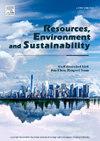通过生物操纵改善水质:亚热带富营养化湖泊能量流和氮循环的可持续管理
IF 12.4
Q1 ENVIRONMENTAL SCIENCES
引用次数: 0
摘要
为了解决富营养化和气候变化导致的有害藻华日益严重的威胁,鱼类生物操纵已成为改善湖泊生态系统水质的一种有前途的策略。虽然生物操作通常通过其对藻类控制的影响来评估,但食物网结构和功能对水质的影响需要进一步的机理理解。本研究利用Ecopath with Ecosim (EwE)模型进行了为期22年的生态系统尺度分析,量化了滤食性鱼类和鱼食性鱼类的双重生物操纵策略如何重塑亚热带富营养化湖泊的能量流动途径和氮循环动力学。结果表明,滤食性鱼类(鲢鱼,Hypophthalmichthys molitrix和鳙鱼,Aristichthys nobilis)的引入通过将52.7%的氮重定向到渔业中来抑制蓝藻华,而鱼食性鱼类(鲈鱼,Lateolabrax japonicus和鳗鱼,Anguilla japonica)的引入放大了营养级联,增强了浮游动物介导的微藻调节。食物网连通性增加(连接度从0.12到0.21),在蓝藻生物量抑制、能量传递效率提高和鱼类介导的氮去除的推动下,将氮通量降至最低,水质改善了38%。这些结果表明,综合生物操纵平衡了渔业产量和富营养化控制,为全球亚热带湖泊的恢复提供了一个气候适应型框架。这项工作推进了对营养-能量协同作用的机制见解,并为变暖生态系统中的可持续水生管理提供了可行的策略。本文章由计算机程序翻译,如有差异,请以英文原文为准。

Enhancing water quality through biomanipulation: Insights into energy flow and nitrogen cycling from a subtropical eutrophic lake for sustainable management
Addressing the growing threat of harmful algal blooms driven by eutrophication and climate change, biomanipulation via fish has emerged as a promising strategy to enhance water quality in lake ecosystems. While biomanipulation is often evaluated by its impact on algal control, the influence of food web structure and function on water quality requires further mechanistic understanding. This study pioneers a 22-year ecosystem-scale analysis using Ecopath with Ecosim (EwE) model to quantify how a dual biomanipulation strategy involving filter-feeding fish and piscivorous fish reshapes energy flow pathways and nitrogen cycling dynamics in a subtropical eutrophic lake. The findings indicate that the introduction of filter-feeding fish (silver carp, Hypophthalmichthys molitrix, and bighead carp, Aristichthys nobilis) suppress cyanobacterial blooms by redirecting 52.7% of nitrogen to fisheries, while piscivorous fish (bass, Lateolabrax japonicus, and eel, Anguilla japonica) amplify trophic cascades, enhancing zooplankton-mediated microalgal regulation. Food web connectivity increased (connectance: 0.12 to 0.21), minimizing nitrogen flux to detritus and improving water quality by 38%, driven by cyanobacterial biomass suppression, enhanced energy transfer efficiency, and fish-mediated nitrogen removal. These results demonstrate that integrated biomanipulation balances fishery yields with eutrophication control, offering a climate-resilient framework for restoring subtropical lakes globally. This work advances mechanistic insights into nutrient-energy synergies and provides actionable strategies for sustainable aquatic management in warming ecosystems.
求助全文
通过发布文献求助,成功后即可免费获取论文全文。
去求助
来源期刊

Resources Environment and Sustainability
Environmental Science-Environmental Science (miscellaneous)
CiteScore
15.10
自引率
0.00%
发文量
41
审稿时长
33 days
 求助内容:
求助内容: 应助结果提醒方式:
应助结果提醒方式:


